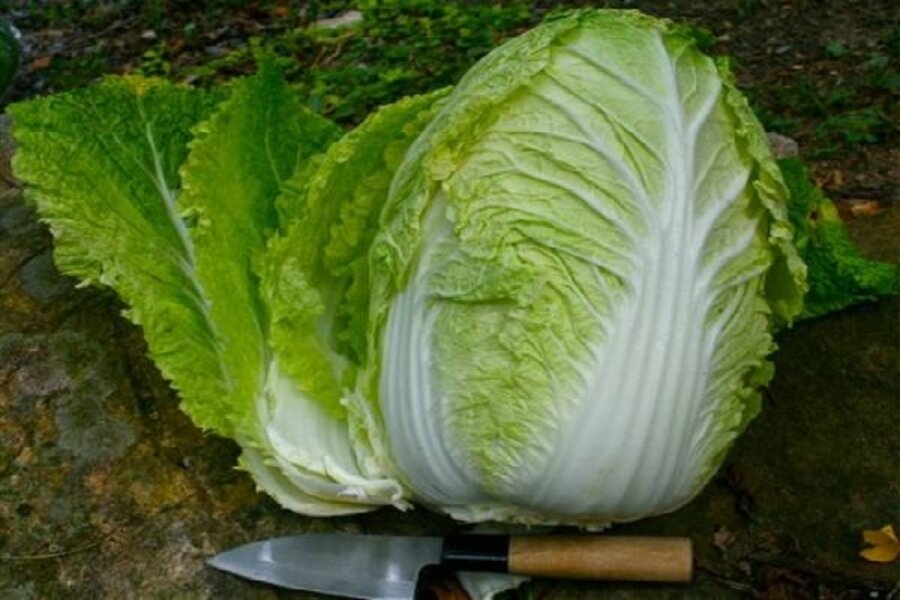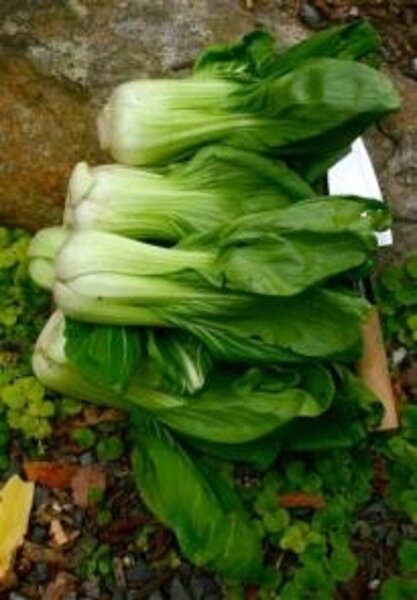No need to order Chinese takeout, grow your own Asian vegetables
Loading...
Plant an assortment of Asian vegetables in the family garden or in any suitable pot, and you'll be able to stir up an inexpensive batch of fresh, flavorful food easier than you can say "Chinese takeout."
Chinese salad greens, for example, "thrive in both vegetable and flower gardens, are low in calories, are worth their weight in nutrition and are deliciously different from the more familiar greens," said Geri Harrington in "Growing Chinese Vegetables in Your Own Backyard" (Storey Publishing, updated edition 2009). "They're not in any way limited to Chinese cooking; Chinese vegetables fit in comfortably with familiar American recipes and their use is practically unlimited."
Ms. Harrington wrote that in 1984 but it's even more appropriate now, said Norma Chang, an author and lecturer specializing in Asian plants and cuisine, in the foreword to the new edition of Harrington's book.
"In the intervening years," Ms. Chang wrote, "both gardeners and cooks have become increasingly curious about the cuisines of other cultures and increasingly confident in growing foods from the other side of the planet."
Growing Chinese vegetables is no different than trying to grow a new hybrid tomato or corn, although the Asian veggies may look prettier, Harrington said.
"Snow peas are more attractive to grow than English peas; Asian squash are more handsome and more interesting than jack-o'-lanterns. Another difference, especially important to container gardeners, is that Asian vegetables generally seem to be more prolific," she said.
Finding seeds or starter plants has become easier in recent years but still takes some effort, Chang said by phone from her home in Poughkeepsie, N.Y.
"There's more interest building in these plants," Chang said. "People seem to know what they are and what they taste like. Now they want to know more about preparing them."
Here are several reasons why growing your own Chinese vegetables is worth digging deeper into the pages of seed catalogs or shopping at Oriental markets:
- Mustard greens. A fast-growing crop available in many varieties. Leaves can be clipped when young, especially for use in salads.
- Flowering kale or cabbage. "Don't look for it in the vegetable side of seed catalogs," Chang said. "It's more commonly listed among the flowers." Plants mature into a striking array of reds, pinks, and greens, and look great in containers or borders. Cook as you would any cabbage: shredded, boiled, baked or stuffed. It also makes a striking centerpiece.
- Daylilies. Chinese eat daylily buds fresh or dried. "Soak the dried buds in water to reconstitute, then throw them into a hot and sour soup," Chang said. "They're mild tasting and will give you a little texture. They look like orange flowers in soups." Daylilies are perennials. Pick buds before they're fully opened.
- Snow peas. Expensive to buy but easy to grow, Harrington said. Economical, too. "When you buy a pound of English peas, you have to shell them, which means ending with about a half-pound to eat," Chang said. "Snow peas give you a full pound because you eat pod and all." Asian varieties are tender and sweet.
- Bok choy. Looks like cabbage but is more closely related to mustard greens. Plant from seed and begin eating when they reach 4 inches in height. "The leaves cook up like spinach; the spines like asparagus," Harrington said. Use in soups, stir-fry, or as a side dish with meat.
- Eggplant. Chinese eggplant is a compact plant, lovely when in flower and even more attractive when loaded with fruit, Harrington said. "Chinese eggplant has a much nicer texture. It's smoother and more refined, not tough, chewy or bitter," Chang said. "Lots of restaurants use it in their cuisine and have been successful with it."
Asian vegetables are surprisingly tough plants and can be grown in most North American climates, said Karen Russ, a horticulture specialist with the Clemson University Cooperative Extension Service. Many spring varieties can be iffy, though, if exposed to temperatures of less than 50 degrees F. (10 C) for any length of time.
"They'll bolt (form unwanted flower stalks), making their flavor decline, their leaves toughen and their taste hotter — some, like the giant mustards, obnoxiously so," Ms. Russ said.
Call the nearest county extension office for information about hardiness zones, planting dates, proven varietals for your area, and to find out when pests emerge for particular crops so you can avoid them, she suggested.
"When you reflect that many of the 'American' foods we take for granted — carrots, beets, apples and many more — aren't native to this country, you realize that a foreign vegetable is just one we haven't yet incorporated into our menus," Harrington said.
Click here for a guide to Asian vegetables and and how to prepare them.
Editor’s note: For more on gardening, see the Monitor’s main gardening page. Our blog archive. Our RSS feed.You may also want to visit Gardening With the Monitor on Flickr. Join the group (it’s free) and upload your garden photos. Join the discussions and get answers to your gardening questions.






